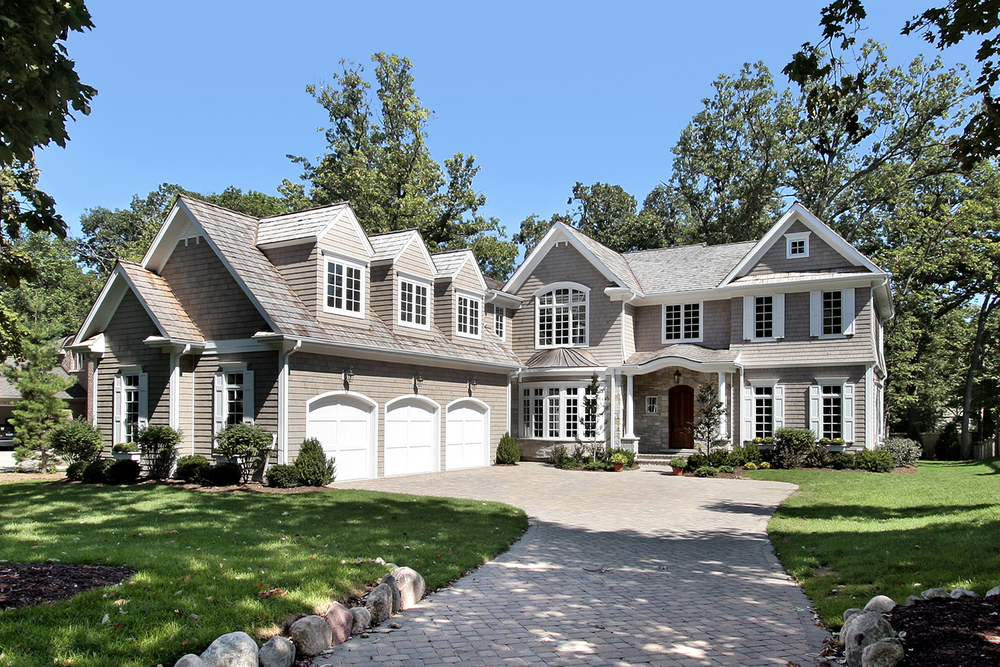How Large Should My Next Home Be?
When buying or building a home, it’s a common belief that bigger is better. But, you may not need a house as big as you think. In fact, size is one of the important things to consider if you’re on the market for a new home. It’s the dream of every homeowner to own a big house, but it all depends on what’s considered “big.” Also, that “big house” that everyone dreams about can come with long-term heating and cooling bills as well as high property taxes. At the same time, you don’t want a house where everyone in your family is cramped together. That’s why you need to ask yourself, “How much square footage do I really need?”
A lot of self-evaluation goes into figuring out how big of a house you really need when you’re building a home. You have to live in the present, but you want to plan for the future. Here are some questions you should ask yourself as you think about your home’s design:
- How long are you going to live there?
- Do you plan on having children?
- If you have kids now, how long are they going to be living with you?
- Do you have elderly family members who may be moving in someday? You may need a single-story home or some space on the first floor to accommodate them.
- Do you have members of your extended family who frequently visit (which will require guest rooms)?
Be sure to speak to a professional if you need more help in coming up with your home design.

Family Size and Square Footage
It’s impossible to predict how many people will be living with you in the future, which makes it difficult to know how much house you really need. But, there are some industry averages that can help you get a better idea of what may happen later on. According to the most recent US Census Report, the average size of a household is 2.6 people. That number may seem low, especially if you think about the large families that existed in the past. But even though families are getting smaller, the average house size has increased. In 1973, the average square footage of a home was 1,660 square feet. Now, it has gone up to 2,631 square feet.
It’s obvious that some households have more than 2.6 people and that some of them have less. While 2,631 square feet may seem like a mansion to some, others might see it as a proverbial broom closet. But, based on the current family and house-size average, you can estimate approximately 1,000 square feet per person. So if you’re thinking about building a home, you need to think about whether you want to live in a home that’s larger than 2,600 square feet.
Some of the typical home features include:
- Gable roof.
- Fireplace.
- Dining room.
- Guest room.
- Family room.
- Main-level laundry.
Inside the home, current trends are pointing to the desire for high ceilings, lots of window that bring nature indoors, and flexible spaces (such as guest rooms as well as combined dining and kitchen spaces). Homes with two or more stories make up about 50% of all the homes completed, while over 37% have three or more bedrooms.
There are hundreds of things to consider when it comes to determining how much square footage you need, but the national averages can lead to the following conclusions:
- A small house is anything less than 1,000 square feet.
- An average home will be approximately 2,500 square feet.
- Large homes will be 4,000 square feet or more.
While size is directly related to how much you’re going to spend on the home, the budget is just as important.
What to Consider While Determining the Size of Your Home
Smaller homes used to be the norm. In 1950, the average home size was 983 square feet. But, during the building boom in 2004, the average home size was 2,340 square feet. Now, it’s over 2,600 square feet. These numbers come from the Survey of Construction (SOC), which is a partially funded analysis by the Department of Housing and Urban Development (HUD).
Here are some factors to consider while you’re deciding on how big your home should be:
- Cost — A smaller home will cost less to build and run than a larger home. While heating and cooling cost is a significant factor, other home improvements (such as painting, roof replacement, or changing the carpet) will cost more in a larger home. It doesn’t include the cost of furniture.
- Quality of Materials — Having a smaller floor plan for building a home means that you would never have to sacrifice quality in building or remodeling materials (such as tiles, countertops, cabinets, and flooring).
- Salability — A home that’s too large will depreciate over time, and their extra energy costs make them harder to sell. Smaller homes, however, will be much easier to sell.
If you’re looking for one of the best home builders in Corpus Christi, be sure to get in touch with Devonshire Custom Homes.
You Dream It, We'll Design it, and We'll build it!







